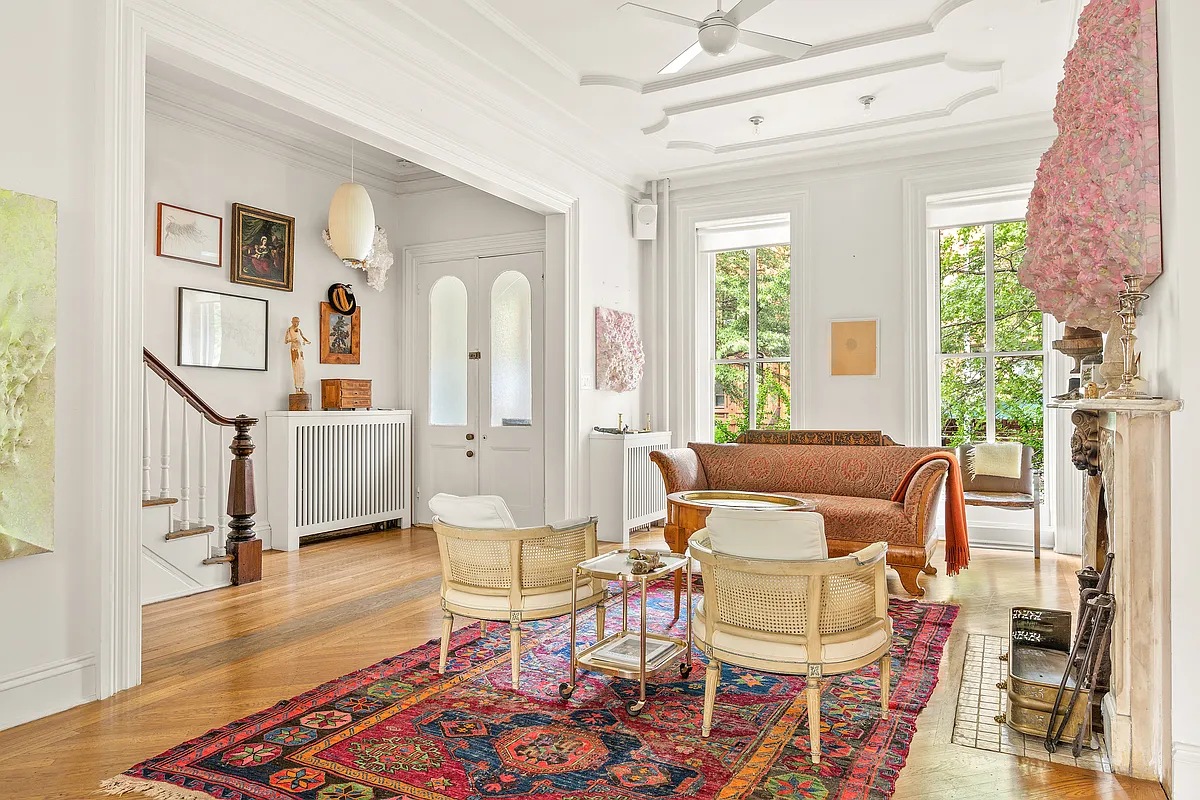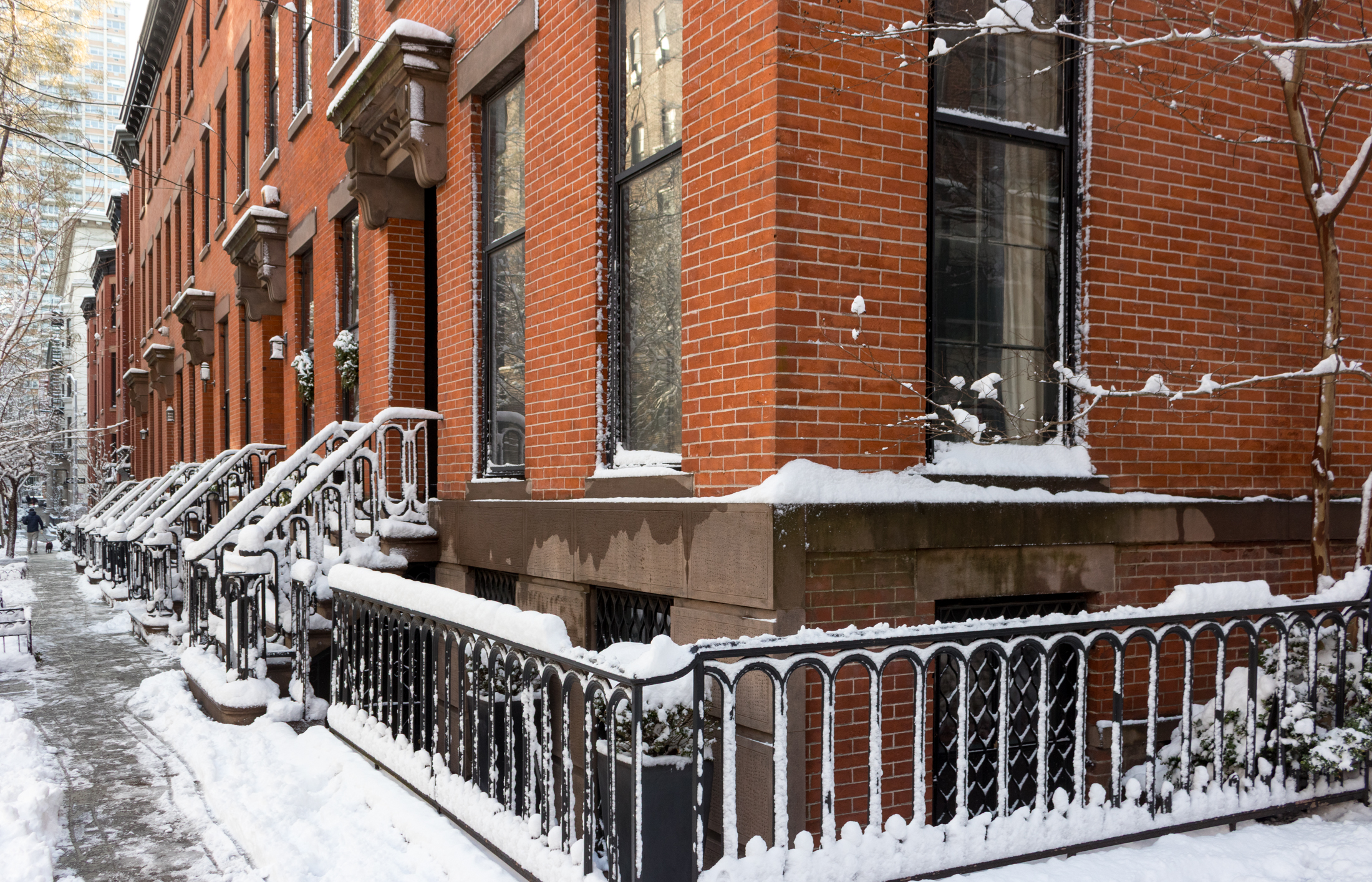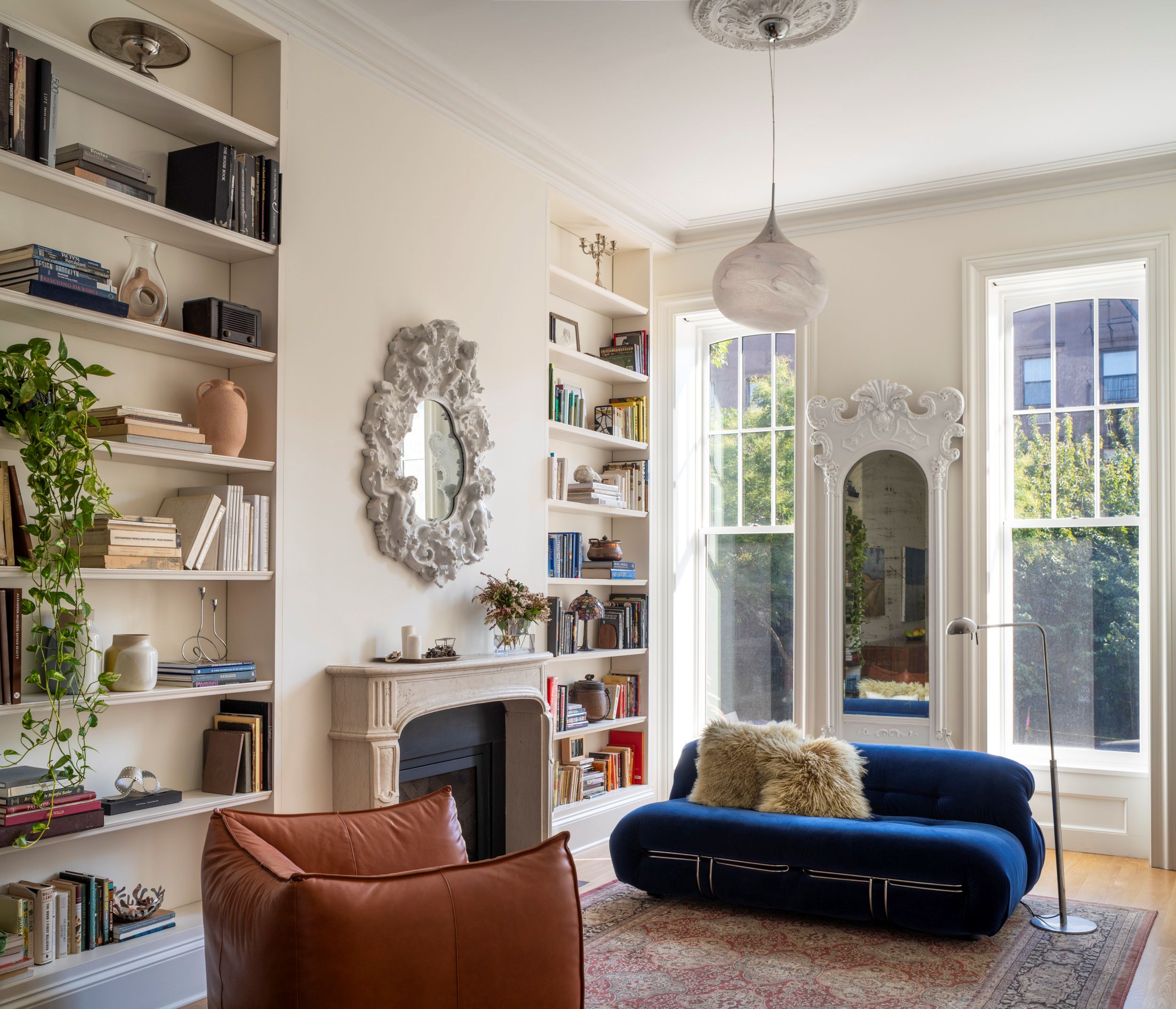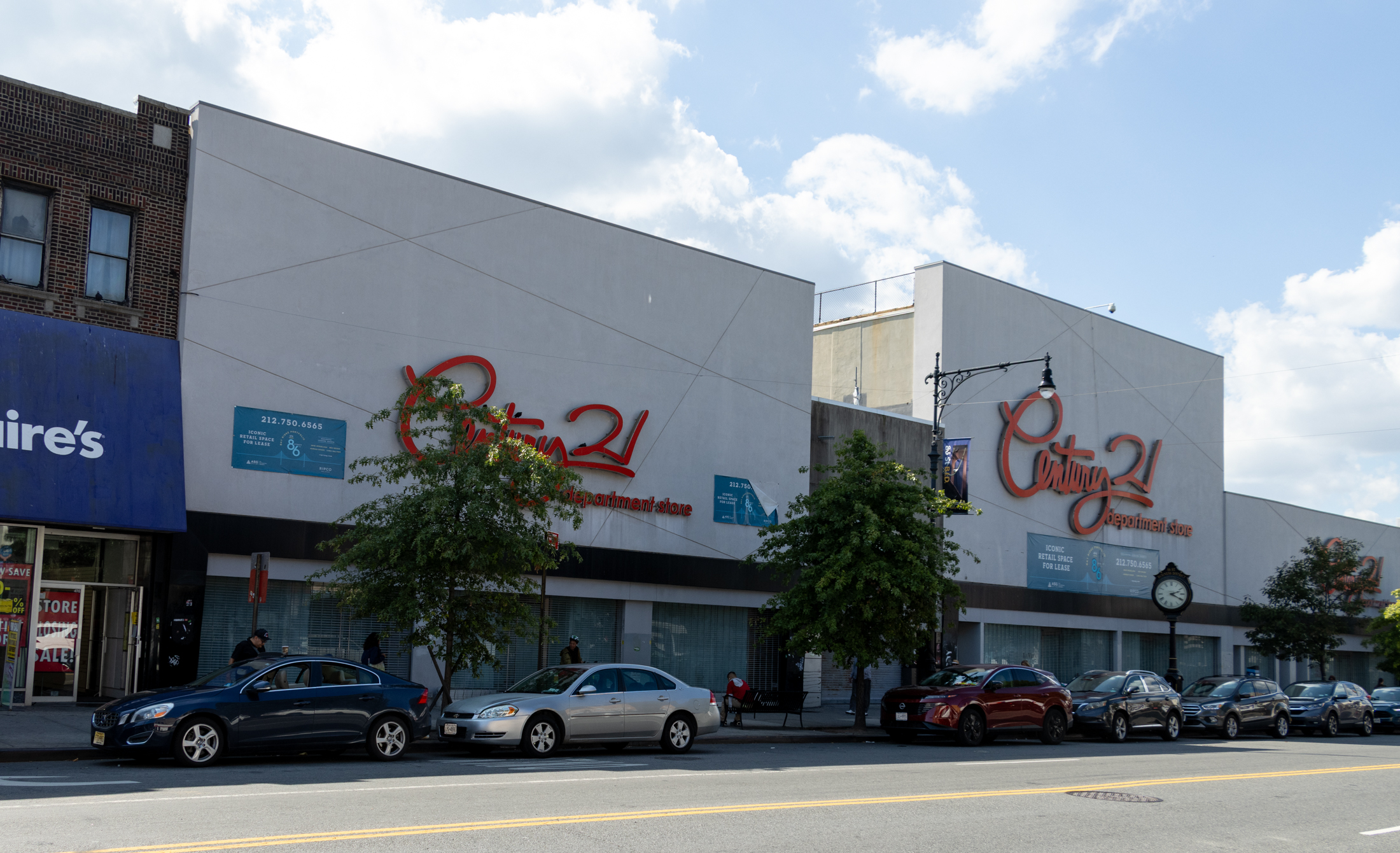Walkabout with Montrose: Tenement Living
This is the second in a series of pieces about the development of multiple-unit housing in Brooklyn. Starting at the bottom of the economic ladder and moving up tenements. There have been tenement buildings in NY since the beginning of the city. The poor and lower working classes have long been sheltered, if you could…


This is the second in a series of pieces about the development of multiple-unit housing in Brooklyn. Starting at the bottom of the economic ladder and moving up tenements.
There have been tenement buildings in NY since the beginning of the city. The poor and lower working classes have long been sheltered, if you could call it that, in cramped and wretched rooms by the docks, slaughterhouses, and factories, and in areas allowed to go to seed by unscrupulous landlords and city officials.
With immigration rising, beginning in the mid 19th century, the population of the Manhattan and Brooklyn continued to grow by leaps and bounds. In 1867, the first of three Tenement House Laws was passed in an attempt to improve conditions, which almost everyone agreed were horrible and inhumane.

Legally, a tenement was defined as any building with 3 or more units, with shared sanitary facilities. This 1867 law only required that a legal tenement had a fire escape and at least one privy for every 20 tenants. This privy was outside, in the back of the building, and the law also forbade the keeping of sheep, goats, horses and cows on the premises.
Most of these tenement buildings had 2 or 3 room units, and had received little light or air. Many of them were 3 and 4 story wooden buildings which deteriorated quickly, and were prone to catch fire. Real reform was still to come.
In 1879, an important new tenement house law was passed, which is referred to as the Old Law. It mandated that new tenement buildings be built to allow natural light and air in every room. The “dumbbell” apartment was invented, with wider rooms in the front and back and narrow centers to allow air shafts to be built in the center to let in necessary light and ventilation.
The lowest income adjoining tenements shared a single rear yard privy, and water was only available in the rear yard. Higher end tenements typically had 4 units per floor, with indoor toilets in the center of each floor, along with the stairwell.
Most higher end units had three rooms, with a living room in the front or rear, and bedrooms open to the air shafts, each successive room being reached by passing through another room. The living room contained a tub and cold water, and a chimney or flue for a coal stove for heating and cooking.

Many of these buildings had four residential floors rising above retail stores on the ground floor, and were often on mixed commercial blocks. Corner buildings, with two street frontages were exempt from the dumbbell configuration, and were often larger than midblock tenements.
By this time, the preferred building materials were brick and stone, not wood, but in spite of the changes, tenements were still crowded and miserable places to live. In 1929, the Multiple Dwelling Law mandated that all tenements be upgraded to replace outdoor privies with one indoor water closet for every two families, and fire safety standards, such as sprinklers and better fire escapes were implemented.
In Brooklyn, we can still find the remnants of the Old Law tenements in the oldest neighborhoods like Brooklyn Heights, Cobble Hill, Williamsburg, Bushwick, and parts of Bed Stuy.

Many of us may have been in one of these apartments that still has the tub in the living room, tiny kitchen against a wall, and a toilet that seem like an afterthought tucked into a closet. It was. Ironically, many of these buildings do not look like our idea of tenements from the outside.
The Victorians believed in exterior ornament, whether on a factory, tenement or private house. These buildings can have expressive cornices, framed windows with ledges and pediments, and fine entry doors. Most are brick, all are walk-ups, and they range in styles from early Neo-Grec, to Romanesque and Renaissance Revival.
The best, and most judiciously thought out tenements are the workers’ housing built by Alfred Tredway White, designed by Wm Field and Son, from 1876 1890. The Tower Building, Home Buildings, and Workingman’s Cottages are found on Warren, Baltic and Columbia Place, in Cobble Hill, while his Riverside Apartments, by the same architects, are in Bklyn Hts, on Columbia Place and Joralemon, part of which was lopped off in the building of the BQE.

All of White’s tenement buildings share the same basic design, are quite beautiful, and allow light and air in through windows and air shafts. The balconies and exterior hallways prevent the foul enclosed hallways of other tenements, as well providing architectural interest.
Storefronts line the street level on Columbia Place. He also provided a large courtyard in each development with a fountain, play area for children, and concert space. In spite of this, the apartments are still extremely small, especially for families.
They also had indoor toilets in each unit, although, originally, common bathing facilities were located in the basements, and were available for an extra fee.

A similar effort in decent worker’s housing was built by Brooklyn’s richest man, Charles Pratt, in 1885-86. The Astral Apartments, for Pratt’s Astral Oil Company workers, span a complete block of Franklin, Java and India Streets in Greenpoint.
They were designed by Lamb and Rich, who also designed most of Pratt Institute. 95 families originally lived here, and because Pratt was not trying to make a profit, he added some amenities White did not.
Each apartment had a toilet and a bathtub with hot and cold running water, and a dumbwaiter to the cellar was provided for trash removal. Like the White buildings, the Astral was well ventilated, and also had stores on the ground floor, and a large courtyard in the rear.

In spite of these two philanthropic projects, the majority of the tenements in Brooklyn were still beyond awful. During the Depression, the WPA tore down many of the deteriorating wood frame tenements. Very few remain today, and beginning in the 1950’s, modern housing projects removed many more tenement blocks.
My Flickr page has some historic photographs of the buildings and those who lived in them, as well photos of some of these buildings today.
Since tenements were designed to house the workers who made the city run – the day laborers, servants, clerks and factory workers, coachmen, carpenters and dressmakers, they are often found on streets now highly desirable for the restaurants, stores and establishments that are now found on many of their commercial ground floors. Many former tenement buildings have now been reconfigured as desirable coops, condos and rentals.
Next in the series: Most late 19th century middle class apartments are not classified as tenements; they are flats, French flats to be exact. So what’s the difference?





Thanks, Mopar, that would be great. I’ve always wondered if some of Bushwick’s wood frames were configured as tenements, I guess they are. I’m sure elsewhere as well. While walking around Bed Stuy and Crown Heights yesterday, Amzi Hill and I figured a lot of buildings on commercial streets could be tenements, but a lot could also be flats, bachelor flats, at least. (Next article in 2 weeks) so I didn’t include them in my photos. Sometimes there wasn’t much difference, anyway. It’s all very interesting, and all a part of what makes a neighborhood.
Has anyone been in the Riverside or other White buildings in the Heights or Cobble Hill? Anyone lived there, or in the Astral? (thanks 6days!)
Rob, they still make those “latches” today, so it’s probably not some great historic find. LOL.
i found this article extremely interesting. frankly i’m amazed that these type of apartments still exist with tubs or showers in the kitchen.
Montrose, plenty of wooden buildings in Bushwick. Most of them are wooden (covered by beautiful aluminum siding of course). They follow the same pattern as the brick buildings. Perhaps the reason you don’t see these outside wooden staircases anywhere is because the law abolished wood and mandated metal fire escapes.
If you’re interested, I can sketch every floor plan for you. Most of them have parlors in the front with dining rooms in the back, a small kitchen and bathroom on the side, with the bedrooms in the center. No one likes this arrangement, of course, so usually the interior walls are ripped out to make one large open center room, and the two big rooms on each end are closed off and used as bedrooms — or sometimes the one in the back is used as a combined DR/LR/family room.
Mostly this pattern seems to date from the 1890s through the 1910s. The older part of the neighborhood, which radiated out from the Dutch Church and the breweries along Bushwick Ave., has more brownstone and freestanding type houses.
Coincidentally, to our mutual amazement, our Tenement Museum guide grew up in a tenement on Macdonough and Bainbridge — literally two blocks from where we are moving to. He is white (maybe Jewish — I didn’t ask). He said the rent was $28 in 1938 and increased to $32 by the early 1950s. In the early 50s, as the neighborhood became progressively more African American, his family moved to Maspeth. He said buying a new house was very cheap back then, so why wouldn’t you?
Our Park Slope “Brownstone” is clearly an old tenement.
When my husband’s grandparents came to visit (Jewish, both grew up on the UWS) his grandmother said, “I just can’t believe that you guys worked 1/2 your life to buy the same place that my parents worked so hard to get out of.”
It is pretty funny.
BTW, if there are tenements as described in this article in Bushwick, I’ve never seen one. The apartments there are indeed multi-family housing, mostly railroad, but they were built with bathrooms for each apartment (or floor) from the beginning. That’s the difference. They did not have the bathtub in the kitchen with one common toilet in the hall. Otherwise, I’d certainly call them tenements.
One interesting oddity of Bushwick two-family buildings, though, is that the apartments did not always have a front door. This means the bathroom (an original bathroom, with tub, sink, toilet, and window or skylight) would appear to be “outside” the apartment across the hall.
Wow, I’m glad this story strikes a cord. My research into this issue was fascinating in ways both horrible and interesting. I too, wonder about the lives of those in the photos, especially the children. Some of the pictures date as close as the 1950’s, so many of those people should still be alive. Often, kids don’t know the conditions they live in are awful, it’s all they know, and kids the world over can play and run in the most horrific poverty, and appalling conditions. Look at Slumdog Millionaire.
Of course, Jacob Riis’ writings brought the tenement conditions to the forefront, as did the work of many people known and unknown who worked to improve things. We haven’t gotten there yet, in many ways. I didn’t include him only because I was trying to keep the piece as short as possible, and relate it specifically to Brooklyn, as much as possible. As it is, it’s longer than most of my pieces, and we all know I can blather on. I didn’t do too much in-depth research as to ethnic groups living where, especially in Bkln. It would be a great topic for a dissertation, or book. I would imagine, the large immigrant ethnic groups, the Irish, Jewish, Italian, Polish, black and Hispanic, all kept to themselves as much as possible, for their own safety and security, as well as ease in culture, language, food, worship, etc. Most groups eventually ended up interacting, but not always peacefully. Stories like “Gangs of New York”, even “West Side Story” are based on fact and history.
Since my focus is architectural history, I’d love to find out more about Brooklyn’s tenement history. Aside from the photos from the Brooklyn Public Library, I could find few real Brooklyn pictures, and little information on exact location of many of them. The Cobble Hill photo with the buildings with the rounded backs – were those staircases inside? Bathroom facilities? Do any of them still exist? Do any of the wood frame buildings still stand in neighborhoods like Bushwick, Brownsville or Williamsburg? Anyone know?
Bxgrl;
Thanks – it seems like there were alot of such stories back then. My folks also loved anything new.
Today it is fashionable to look back on the 50’s suburbs and mock the drive for something new! new! new! and peaceful back then. However, as someone once explained to me – imagine growing up in the Depression in a 6-story walk-up tenement surrounded by crime and poverty, and then getting shipped off to fight in WWII and witnessing that devastation. Coming off those experiences, what was not to like about the peace and serentity of a Levitt Town???